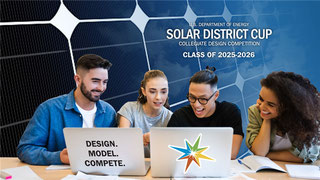Problem Statement
Adverse Childhood Experiences (ACEs) are stressful events occurring in childhood (see video above and list below) and have lifelong impacts on health, behaviour.
In 1995, a survey of patients in a health plan looked at their health as adults and the childhood traumas they had experienced. Ten traumas were listed:
Sexual; Verbal; Physical abuse;
Emotional; Physical neglect;
Parent who is mentally ill; an alcoholic;
Mother is domestic violence victim; Family member jailed; Loss of parent by divorce or abandonment.
When the doctor saw the results, “I saw how much people had suffered and I wept.”
People with many ACEs have a increased risk of poor health, educational failure, imprisonment, addiction, etc. Four+ ACEs significantly increase the risk of a person:
Developing cancer (x2); Being a current smoker (x2); Having sexually transmitted infections (x2.5); Using illicit drugs (x5); Being addicted to alcohol (x7); Attempting suicide (x12).
This does not mean that these conditions will only appear in people with a high number of ACEs but the risk of them appearing is much higher.
Other ACEs have been proposed since the original study e.g. racial abuse, poverty, bullying, etc. These are mostly societal / cultural and are NOT the subject of this Challenge.
Adverse Childhood Experiences therefore are a root cause of trauma, result in wasted lives and are a huge cost to society.
Pain Point
Individuals, communities and society pay a huge cost in dealing with the effect of ACEs - wasted lives, premature death, effect on communities e.g. anti-social behaviour, healthcare, justice, education costs i.e. tax revenues.
What are the root causes for the original ACEs?
The original ACEs (Sexual; Verbal; Physical abuse; Emotional; Physical neglect; Parent who is mentally ill; an alcoholic; Mother is domestic violence victim; Family member jailed; Loss of parent by divorce or abandonment), are mainly family-based.
These also split into several categories; Abuse and neglect, Illness and addiction, Control issues, Criminality, Dysfunctional family relationships.
Some thoughts about why ACEs occur:
Firstly, parents can pass their ACEs on to their children (intergenerational trauma) because of their own learned behaviour/trauma. What could be done to raise awareness of the effect of their parenting and/or change their parenting approaches? Would helping them deal with their ACEs change their parenting?
Secondly, do parents generally (not just those with ACEs) know how to parent well and know about ACEs? Where do parents go for advice? One person with lived experience of ACEs told me their source of advice were other members of their family. Is that the norm? What can be done to change parenting behaviours? Could parents help other parents by demonstrating good practices i.e. change social norms?
Dysfunctional family relationships seem to be another root cause. How can good, stable family relationships be encouraged and created?
Much of what goes on behind family doors stays a secret. Children may not feel free to tell their parents, another family member or someone in the community. Would early disclosure prevent further ACEs? Are children's stories dismissed too readily? How can children be encouraged to speak out? Can early trauma be spotted?
Parents are often stressed due to work, finance, illness, etc., This could lead to lack of quality time with children, lack of patience, etc. How can stress be reduced within the family setting?
They say it takes a 'village' to raise a child. Has the sense of 'village' (the community) weakened? Could this have allowed ACEs to increase? How could you bring back the 'village' as something that prevents ACEs?
Thinking about these and other root causes, how do we successfully engage one of these groups; youth (future parents), parents, caregivers e.g. grandparents in PREVENTING some of these ACEs in the first place, in a low-cost way?
Current Solutions
Legislation has been passed in 20+ US states and other countries have taken a Public Health approach. However, these approaches seem to focus on action by state agencies e.g. schools, police, healthcare, local government i.e. professionals.
This means the focus is in REDUCING the effect of ACEs once they have occurred. There seems to be very little focus on PREVENTION which naturally involves parents.
State agencies are developing/have developed ‘trauma-informed practices’ to mitigate the effects – moving from ‘why did you do that?’ to ‘what has happened to you?’ approaches. These have had some effect e.g. reducing school exclusions.
Parenting courses might seem an obvious solution but personal research of initiatives by non-profits shows that attendance at these is very low for reasons explained further on.
You don’t need to be an expert to participate in this challenge. We’re looking for people who empathize deeply with this problem, want to explore it more thoroughly, believe that Adverse Childhood Experiences (ACEs) can be prevented, and can communicate a clear idea / vision.
Challenge requirements:
We are looking for ideas that must address the question, "Thinking about the root causes identified above and others you may think of, how do we successfully engage one of these groups; youth (future parents), parents, caregivers e.g. grandparents in PREVENTING some of these ACEs in the first place, in a cost-effective way?"
We are looking for ideas that can be piloted in any community (which can be location based e.g. estate, township or a group defined by a common factor e.g. new parents, ethnicity). The ideas can describe a service or technology or a mixture of both. Obviously one can suggest ideas which would cost $Ms to implement but this is totally impractical. Think of what can be simply done by a community themselves, a non-profit or a social enterprise / B-Corp.
It's no good to just say for example, 'hold parenting classes'. Attendance at these is historically very low due to time pressure, both parents needing to attend, privacy, pride, fear of judgement, apathy, etc. They may not attract parents with high ACEs. Think of such barriers in the community. Ideas should therefore show how such barriers can be overcome to engage large numbers in the selected community.
As you would expect, people with a high number of ACEs tend to migrate to deprived areas due to the effect of their trauma and they often pass their ACEs to their children (intergenerational trauma). Having said that, the original ACE study was with 17000 middle-class individuals in a health plan in the USA – this correlated the number of ACEs with increasing health conditions. So ACEs are prevalent in any population.
Teams/individuals can create multiple submissions e.g. a solution for one group and a different solution for another, a solution for one ACE for a group and a different solution for another.
Submit your idea(s)!
Each submission should:
- Identify the group and community type.
- Identify the ACE(s) you want to prevent.
- Describe your idea for successfully engage one of these groups; youth (future parents), parents, caregivers e.g. grandparents in preventing some of the ACEs. Your idea should be implementable within 12 months.
- If your idea involves technology, describe the interactive journey a user might take. Make sure that anyone with limited technical knowledge or limited access to technology could still use the system. Describe what assumptions you have made and how it could be tested. Describe how it would be propagated in the group and community and what resources would be required to do this.
- If your idea involves a service, product and/or campaign, describe this and discuss how it could help overcome existing attitudes or behaviours that cause the ACE(s) you are focused on. Describe what assumptions you have made and how it could be tested. Describe how such a service, product and/or campaign would be introduced in a group and community and what resources would be needed e.g. staff, physical space.
- Explain why and how you believe your submission can be successfully implemented. Mention any risks that might cause the project to fail. Summarize any online or in-person research you’ve done to understand this population, the effect of ACE(s) and what actions potentially could work.
- Explain the impact your idea will have on the group and community. Try to quantify this impact. Describe how you will measure this. Optionally, share proof-of-concept data showing implementation and testing of your proposed solution.
- Can this idea be implement with relatively little cost? Given one community, what are the cost elements that you foresee? How much would these roughly cost (in USD) in first year?
- Thinking of marketing and/or awareness raising, what headlines would you suggest in order to get the message across to the community? Assume average reading age is 8 years old. What channels, materials would you use?
- Describe how you would measure activities and outcomes (impact)?
- Describe how the community can be involved and implement this idea themselves. Describe the appropriateness of the idea given the culture of the group.
- Describe any behavioural science nudges, if any. Point to any research that could support these nudges.
Judging Criteria
Judges will be scoring submissions based on the following criteria and weights.
- Feasibility and Research: How feasible is this idea to implement in practice? Is it backed by research? 20%
- Impact: Could this idea produce a lot of impact in preventing ACEs? 20%
- Cost: Can this idea be implement with relatively little cost? 20%
- Awareness raising potential and messaging: Does the idea create widescale awareness in the community of ACEs and their effects? How effective, easy to digest is the messaging suggested in the submission (assume average reading age is 8 years old)? 15%
- Measurement: Does the idea contain feasible ways to measure impact? 10%
- Community action and cultural fit: Is this something that the community can do themselves (rather than 'to' them)? Is it appropriate culturally? 10%
- Behavioural Science used: If nudges are described, are they based on other case studies i.e. proven? 5%
In addition, the judges will discuss, based on their knowledge, how innovative is this idea or has it been tried many times before (and failed). Based on this assessment, the idea may be rejected.
The Submission Form also defines the percentage of marks given to each judging criteria.
Prize
There will be up to 5 prizes:
- Highly Promising: Up to 5 teams/individuals will receive $500.
Teams may consist of up to 3 people; prizes awarded to a team should be divided evenly by the captain among the team's members.
See the Official Rules section below for more information about eligibility, prizes, and restrictions.
Rules
Participation Eligibility:
The challenge is open to all adult individuals and private teams. Submissions must be made in English. All challenge-related communication will be in English. Individual competitors and teams may originate from any country, as long as United States federal sanctions do not prohibit participation (see: https://www.treasury.gov/resource-center/sanctions/Programs/Pages/Programs.aspx).
No specific qualifications or expertise in the field of social work or paediatrics is required. Prize organizers encourage outside individuals and non-expert teams to compete and propose new solutions.
To be eligible to compete, you must comply with all the terms of the challenge as defined in the Challenge-Specific Agreement.
Registration and Submissions:
Submissions must be made online (only), via upload to the HeroX.com website, on or before the posted contest deadline. No late submissions will be accepted.
This challenge allows multiple submissions per individual/team. Should you have multiple entries to submit to this challenge, they will be considered separately. Whether or not multiple entries from the same individual or team may be chosen for a prize is up to the discretion of the Challenge Sponsor. You are not required to submit multiple entries, if that option is available.
Intellectual Property Rights:
As detailed in the Challenge-Specific Agreement, by entering, Innovator agrees that: (i) all Submissions become Challenge Sponsor's property and will not be returned; and (ii) Challenge Sponsor and its licensees, successors and assignees have the right to use any and all Submissions, and the names, likenesses, voices and images of all persons appearing in the Submission, for future advertising, promotion and publicity in any manner and in any medium now known or hereafter devised throughout the world in perpetuity.
Selection of Winners:
Based on the winning criteria, prizes will be awarded per the Judging Criteria section above. In the case of but a tie, the winner(s) will be selected based on the determination of the Sponsor.
In the case of no winner, Sponsor reserves the right to withhold the Prize amount. In place of the original prize amount, Sponsor must issue a Consolation Prize to the team or individual closest to the winning solution in the amount of at least 15% of the total original prize purse.
Awarding of the Prize:
The Individual Submitter or Team Captain is automatically designated as the Recipient of the prize monies. The Individual’s or Captain’s name must also match the Authorized Person on the receiving Bank Account. No changes are permitted to the prize Recipient after the Submission Deadline date. If you wish to change who would receive the prize monies, those changes must be completed prior to the Submission Deadline. View our Knowledge Base article here for how to change Team Captains.
Judging Panel:
The determination of the winners will be made by the Sponsor.
Additional Information
- By participating in the challenge, each competitor agrees to adhere to the HeroX Intellectual Integrity Policy and promises to submit only their original idea. Any indication of "copying" amongst competitors is grounds for disqualification.
- All applications will go through a process of due diligence; any application found to be misrepresentative, plagiarized, or sharing an idea that is not their own will be automatically disqualified.
- All ineligible applicants will be automatically removed from the competition with no recourse or reimbursement.
- No purchase or payment of any kind is necessary to enter or win the competition.
- Void wherever restricted or prohibited by law.







